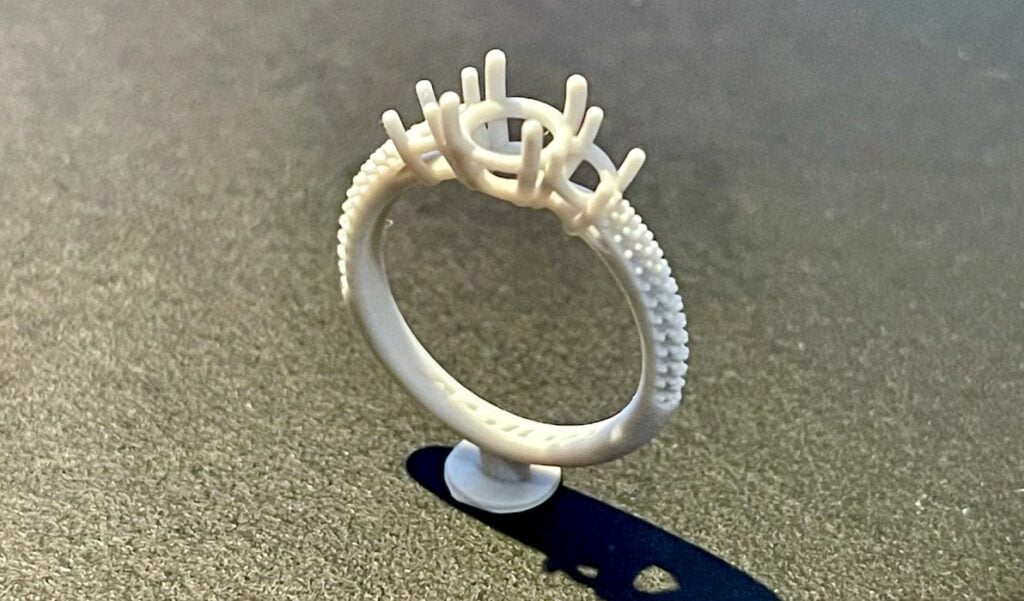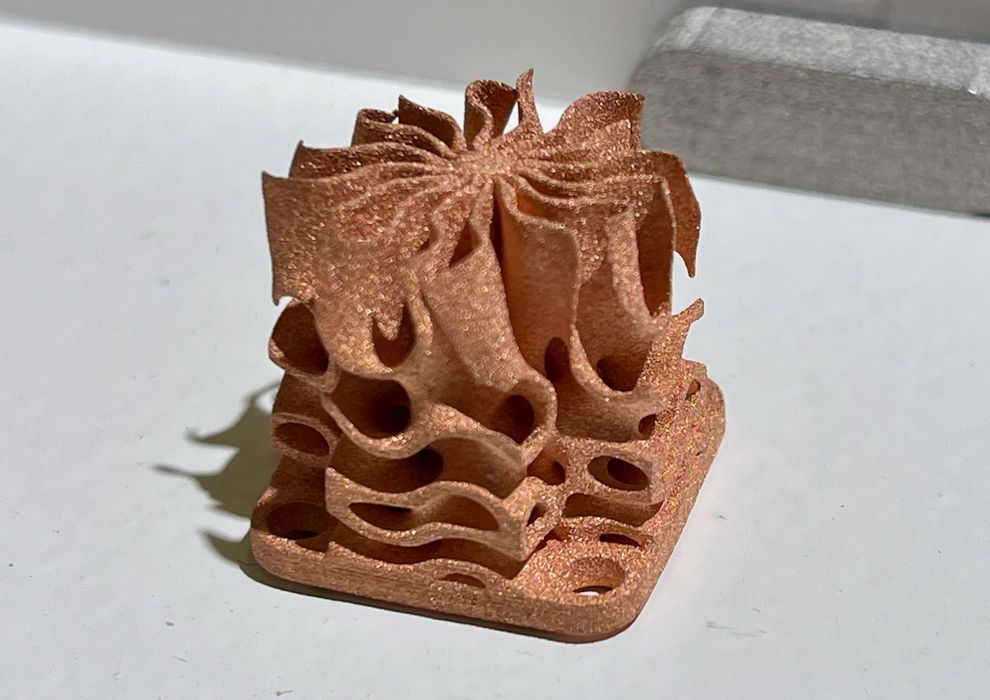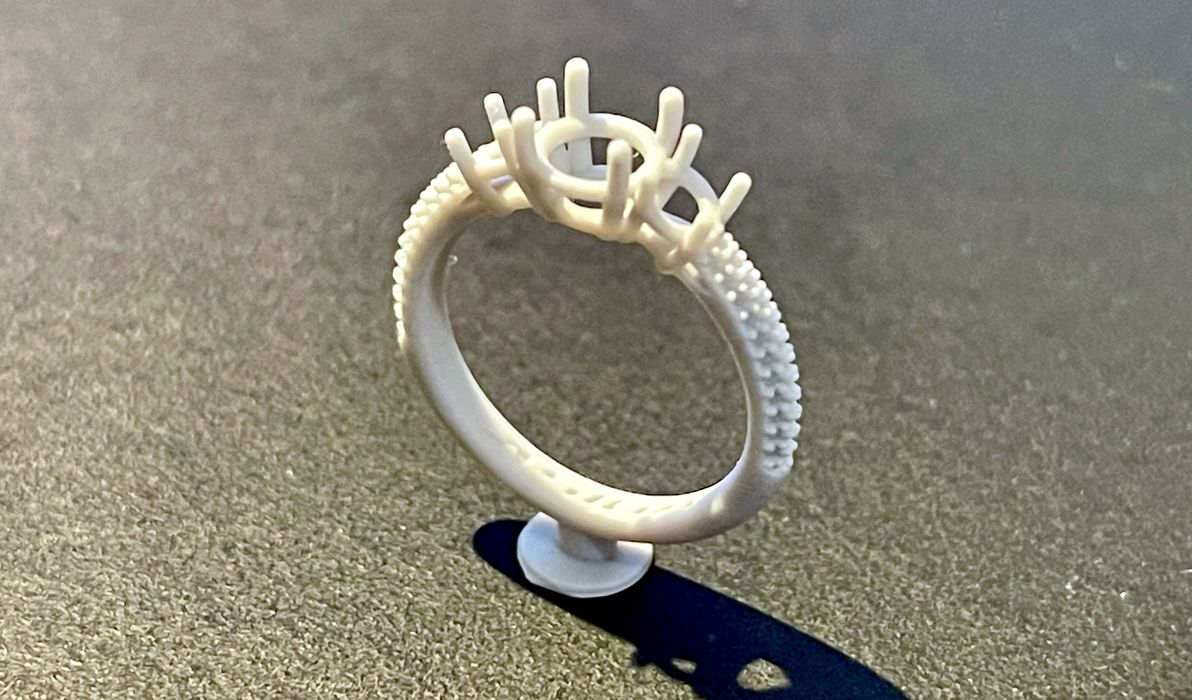
This week’s reader question relates to jewelry 3D printing.
Fabbaloo reader Daniyal from Turkey asks:
“I am looking for start new business as making jewelry with 3D printer. Can you help me with this? Which brand I should buy for 3D printer that make 18k gold directly? How I get raw materials and gold powder?”
Daniyal, this is a complex question that has several possible answers that follow two main paths.
Metal Casting With 3D Prints
The first path is the easiest to do: instead of using 3D printing to produce the objects, you use 3D printing to cast metal objects.
This is done through the lost wax process. Basically, a 3D printer is used to produce a wax version of the jewelry item. This wax print is then encased in jeweler’s plaster, which hardens. After applying heat, the wax melts and flows out of the plaster, which retains a negative 3D image of the original object. Hot liquid metal (like gold, silver or other metals) can be poured into the plaster to cast the item. After removing the plaster, the object can be trimmed and polished as necessary. At top there is an image of a castable 3D print for a ring as an example of this process.
To do this one would simply have to obtain a 3D printer that can print in castable materials, and perform the lost wax process using plaster and a furnace. One of the most popular brands with jewelers is Solidscape, whose S390 device is frequently used by jewelers for this process.
However, there are many other options. As we wrote back in 2018, the patents have begun expiring on many forms of wax-based 3D printing, and thus we expect the cost of alternatives to Solidscape to be increasingly less expensive.
One option is the easy to use Form 3 system from Formlabs, which offers a castable wax resin that can produce high resolution objects. After printing, the lost wax process proceeds in the same way, except you’ve spent less on the 3D printer and materials.
A third option could be any number of other resin-based 3D printers. These are now available at relatively low cost, even less expensive than Formlabs equipment. However, they are more difficult to use, whereas Formlabs has a sophisticated workflow that’s designed to be easy to use. You would have to find third-party castable resins and experiment with settings to determine the best way to print with them. For novice 3D printer operators, this might not be the best way forward, although it would likely be the least expensive.
For any of these castable approaches, you would obtain the gold material from normal jewelry sources, because it’s not actually used in the 3D printer. As long as you have a a way to melt and pour the gold into the plaster, you’re good to go.
This approach is used by almost all 3D printing jewelers to produce gold jewelry, because it’s relatively inexpensive, mostly uses traditional processes, and can produce highly detailed items.
Direct Metal 3D Printing

Another approach for producing gold objects is to directly 3D print them.
Unfortunately, there aren’t very many 3D printers that do this, and there are some good reasons for that.
First, gold (and silver) are metals, and to print them they must be heated to significant temperatures. This extreme heat makes the design of the 3D printer far more complex, and thus raises costs significantly.
Another problem is resolution. While resin 3D printers that make wax prints can provide exceptionally fine details, the direct printing of metal isn’t nearly as precise. See the example above of a 1cm cube of copper, made with one of the most precise metal 3D printers available. It’s quite good, but not nearly sufficient for jewelry items.
This really isn’t the way forward for most jewelers, as it’s too expensive and doesn’t yield the best results.
Other Approaches
There are a couple of related processes that could be considered.
One is the possibility of using precious-metal powder infused filament and print jewelry items in a mix of polymer and metal. Post processing in a sintering oven would release the polymer and fuse the metals together. However, this would not have nearly the required resolution, and I am not aware of any provider of “gold filament”.
Another possibility is to coat the prints with a gold covering. This is actually a service provided by several companies, such as Shapeways and i.Materialise. However, jewelers tend to want solid metal jewelry, not coated jewelry.
Finally, there are new developments in the works that might be able to address the problem. HP, for example, is known to be adapting their MJF process to 3D print precious metals. However, this is definitely not available yet. It’s a fast changing field, and you never know when a company might emerge with a radically different solution.
Conclusion
For a jeweler starting out with 3D printing, the best bet would be to work with a company producing resin 3D printers designed for making castable prints. There are many on the market, and you need only choose one that fits your budget.

